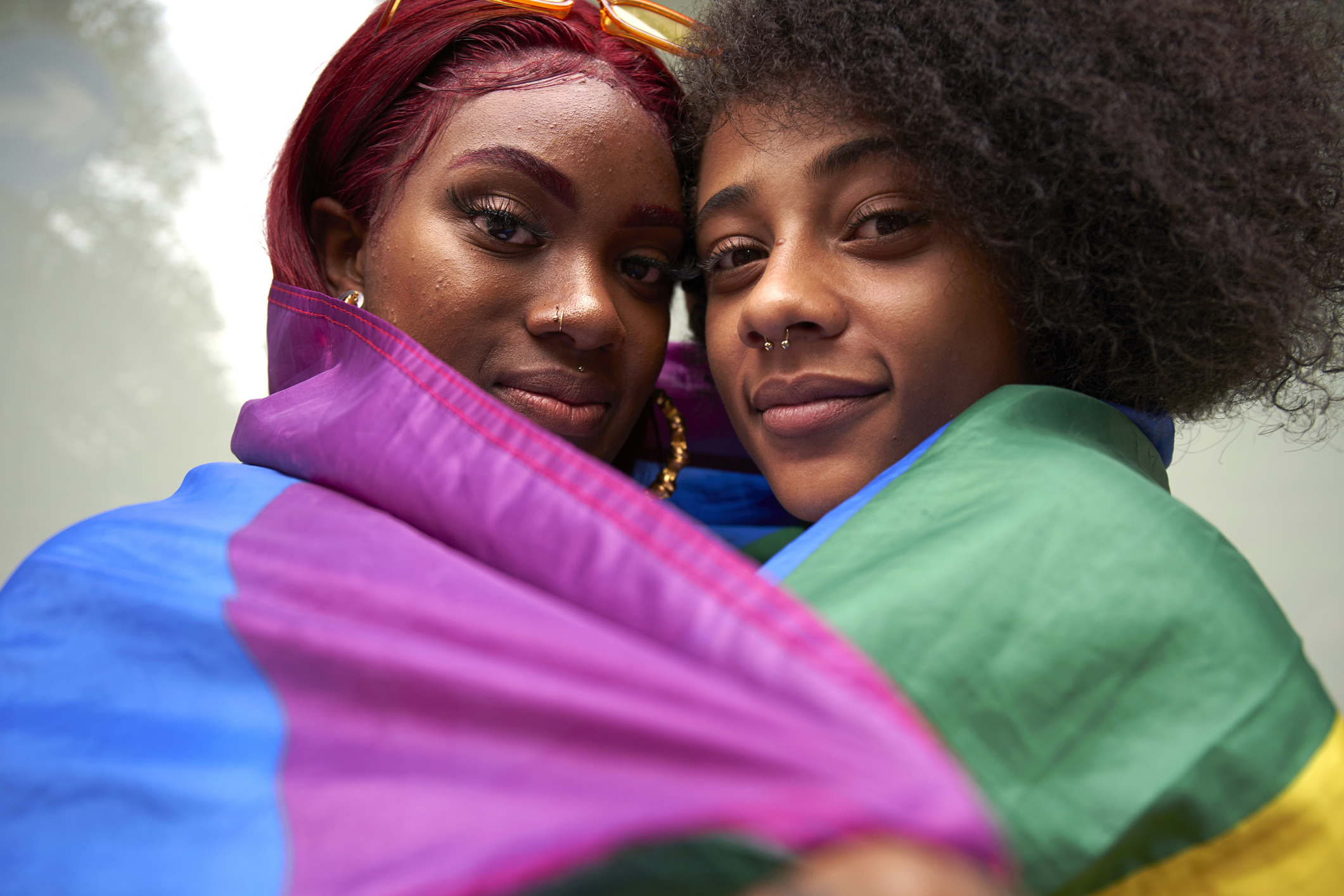Facts about Pride Month: a look at the history of the colorful celebration
From Pride parades to the colors of the flag, these facts about Pride Month will have you prepped for the June festivities

Christina Izzo

It's time for a little history lesson, folks: these facts about Pride Month are here for your perusal, just in time for the rainbow-hued celebration to kick off. As the 2022 festivities get underway, we're taking a look back to see how this significant time of the year for the LGBTQ+ community has evolved.
Facts about Pride Month everyone should know:
Why is it called Pride Month?
The connection between the idea of "pride" and the LGBT community all goes back to the Stonewall Riots of 1969 in New York City: a year after the rebellion, LGBT New Yorkers commemorated the event by walking together in the Christopher Street Liberation Day March as they chanted, "Say it clear, say it loud! Gay is good, gay is proud!"
A bisexual activist named Brenda Howard became known as the "Mother of Pride" for her efforts in coordinating this first "Pride" rally and march in NYC and originating the idea for a week-long series of events around Pride Day, which we now know as Pride Week.
What were the Stonewall Riots?
The Stonewall Riots occurred on June 28, 1969, when NYPD officers raided The Stonewall Inn, a popular gay bar in Manhattan's West Village. When the police involvement turned violent, patrons fought back, kickstarting a multi-day uprising in protest of police harassment, social discrimination and lack of civil rights for LGBTQ individuals.
It was a watershed moment for American civil rights, lighting a fire under the international gay rights movement and heralding a new generation of political activism, resulting in the advent of many LGBT rights organizations that are still working today, including the Human Rights Campaign, PFLAG and GLAAD.

Why is June Pride Month?
Pride Month is celebrated in June every year to coincide with the anniversary of the Stonewall Uprising in New York City.
Though gay pride has been celebrated every year in the five decades since the riots, Pride Month was formally recognized by a US president for the first time in 1999, when then-president Bill Clinton declared June "Gay & Lesbian Month." President Barack Obama reiterated this proclamation every year he was in office, from 2009 to 2016. President Donald Trump acknowledged LBGT Pride Month in 2019 via a tweeted "Statement from the President."
On June 1, 2021, President Joe Biden followed suit with his own official proclamation.
"Pride is a time to recall the trials the Lesbian, Gay, Bisexual, Transgender, and Queer (LGBTQ+) community has endured and to rejoice in the triumphs of trailblazing individuals who have bravely fought—and continue to fight—for full equality," the president wrote.
He continued: "While I am proud of the progress my Administration has made in advancing protections for the LGBTQ+ community, I will not rest until full equality for LGBTQ+ Americans is finally achieved and codified into law. That is why I continue to call on Congress to pass the Equality Act, which will ensure civil rights protections for LGBTQ+ people and families across our country."
What does the Pride Flag mean?
The original rainbow Pride flag was designed by Gilbert Baker in 1978, and each color has a significant meaning.
- Pink: sex
- Red: life
- Orange: healing
- Yellow: the sun
- Green: nature
- Turquoise: art and magic
- Blue: serenity
- Purple: the spirit
Baker's original design has evolved and expanded over the decades, notably in 2018 when non-binary American designer Daniel Quasar created the "Progress Flag," which updates the traditional rainbow flag to include a chevron that features black, brown, light blue, pink and white stripes, representing marginalized POC, trans individuals, those living with HIV/AIDS, and deceased members of the LGBTQ+ community.
What cities have the biggest Pride parades?
Although Pride events take place worldwide, there are a few cities that are especially known for their parades and celebrations. The International LGBTQ+ Travel Association states that New York City, São Paulo, and Madrid Pride events are the world's largest and rake in roughly 5 million guests each.

Need a TV show recommendation? Maybe a few decor tips? Danielle, a digital news writer at Future, has you covered. Her work appears throughout the company’s lifestyle brands, including My Imperfect Life, Real Homes, and woman&home. Mainly, her time is spent at My Imperfect Life, where she’s attuned to the latest entertainment trends and dating advice for Gen Z.
Before her time at Future, Danielle was the editor of Time Out New York Kids, where she got to experience the best of the city from the point of view of its littlest residents. Before that, she was a news editor at Elite Daily. Her work has also appeared in Domino, Chowhound, and amNewYork, to name a few.
When Danielle’s not writing, you can find her testing out a new recipe, reading a book (suggestions always welcome), or rearranging the furniture in her apartment…again.